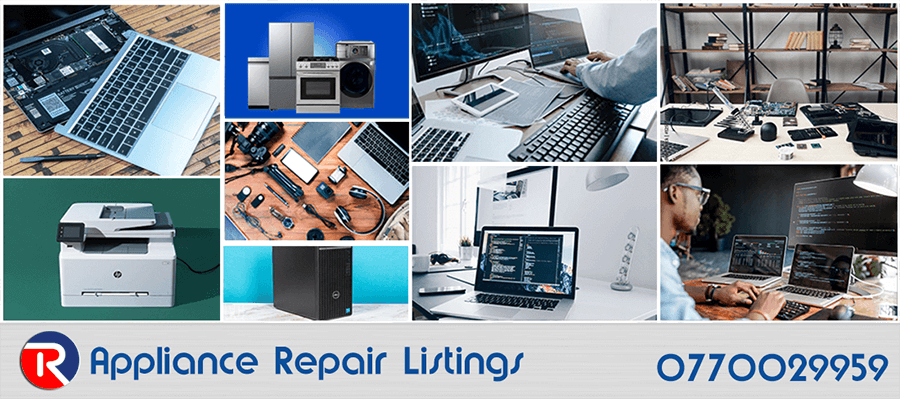
How to Diagnose Common Laptop Hardware Issues
By Repair.co.ke
Laptops are indispensable tools for work, education, and entertainment, but hardware issues can disrupt their functionality. Diagnosing common laptop hardware problems promptly can save time and prevent costly repairs. This article provides a comprehensive guide to identifying and troubleshooting frequent hardware issues, empowering users to address problems effectively.
1. Failure to Power On
A laptop that refuses to power on is a common issue with several potential causes. Begin by checking the power adapter and cable for visible damage, such as frayed wires or bent connectors. Ensure the charger is plugged into a functional outlet and verify that the charging indicator light is on. If the laptop remains unresponsive, remove the battery (if removable) and hold the power button for 30 seconds to perform a hard reset. Reconnect the adapter and attempt to power on the device.
If the issue persists, test the adapter with a multimeter to confirm it delivers the correct voltage, as specified on the charger. A faulty power jack or motherboard may also be the culprit, requiring professional inspection. For instance, a loose or damaged DC-in port can prevent proper power delivery, necessitating repair or replacement.
2. Overheating and Fan Issues
Overheating is a prevalent problem, often indicated by excessive heat, loud fan noises, or sudden shutdowns. Dust accumulation in vents and fans is a primary cause, obstructing airflow. To diagnose, listen for irregular fan sounds, such as grinding or rattling, which suggest a failing fan. Use monitoring software, like HWMonitor, to check CPU and GPU temperatures; readings above 85°C under load indicate overheating.
Clean the cooling system using compressed air to remove dust from vents and fans. Ensure the laptop is placed on a hard, flat surface to avoid blocking airflow. If temperatures remain high after cleaning, the thermal paste on the CPU or GPU may need replacement, as degraded paste reduces heat transfer efficiency. Persistent overheating may point to a defective heat sink or fan, requiring professional service.
3. Slow Performance or Freezing
Sluggish performance or frequent freezing often stems from hardware issues, such as a failing hard drive or insufficient RAM. To diagnose, open the Task Manager (Windows) or Activity Monitor (macOS) to monitor resource usage. High disk usage (near 100%) with minimal activity suggests a failing hard drive. Run a disk health check using tools like CrystalDiskInfo to assess the drive’s status. Errors or bad sectors indicate the need for replacement, ideally with a solid-state drive (SSD) for improved performance.
Insufficient RAM can also cause slowdowns, especially when multitasking. If RAM usage consistently approaches capacity, consider upgrading to a higher capacity, ensuring compatibility with the laptop’s motherboard. Overheating can exacerbate performance issues, so cross-check for thermal problems as described earlier.
4. Display Issues
Display problems, such as flickering screens, distorted colors, or no display, often involve the screen, cable, or graphics card. Start by connecting the laptop to an external monitor via HDMI or VGA. If the external display works correctly, the issue likely lies with the laptop’s screen or its internal video cable. Gently press around the screen’s bezel to check for loose connections, as a flickering display may indicate a damaged or disconnected cable.
If the external monitor also shows issues, the graphics card or motherboard may be faulty. Update or reinstall graphics drivers to rule out software issues. Persistent problems suggest hardware failure, requiring professional diagnostics to determine whether the GPU or motherboard needs repair.
5. Battery Not Charging
A battery that fails to charge can result from a worn-out battery, faulty adapter, or damaged charging port. Check the adapter and port as described in the power-on issue section. If the adapter is functional, inspect the battery’s health using built-in tools like Windows Battery Report or macOS System Information. A battery with a significantly reduced capacity (below 50% of its original) should be replaced.
Ensure the battery contacts are clean and free of corrosion. If the laptop powers on but doesn’t charge, the charging circuit on the motherboard may be defective, necessitating expert repair.
Diagnosing laptop hardware issues requires a systematic approach, starting with basic checks and progressing to advanced troubleshooting. Regular maintenance, such as cleaning vents and monitoring performance, can prevent many problems. For complex issues, such as motherboard or GPU failures, consult a professional technician to avoid further damage. By understanding these common hardware problems, users can extend their laptop’s lifespan and maintain optimal performance.
Repair.co.ke specializes in laptop diagnostics and repairs, offering expert solutions for all hardware issues. Visit our website for professional assistance.